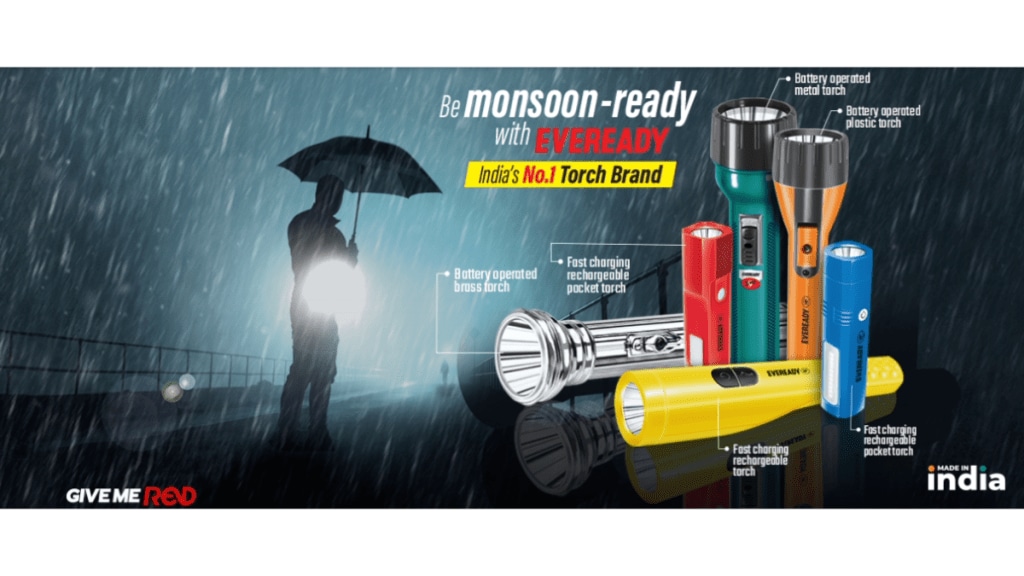Sholay was the Indian film with the longest theatrical run until Dilwale Dulhania Le Jayenge (1995) broke that record of 286 weeks in 2001. Today, the lifetime of even a `1,000-crore grosser like Pathaan is over by the time it reaches its eighth week and pops up on OTT. Brands can thank their lucky stars that they have a far longer shelf life even to this day but to stay relevant and in tune with the times they must reimagine themselves from time to time.
Hundred-year-old Eveready, which has over 40% of the dry cell battery market in India, is doing just that with a complete image makeover and portfolio revamp. Its new logo retains the ‘Cat-O-9’ unit, which has been a defining image of the brand, while sporting an intentional asymmetry — the left side is slightly smaller than the right. The change is subtle but purposeful and denotes progress “from uncertainty to empowerment”, says the company. The brand has tweaked its legendary catchphrase ‘Give Me Red’ to ‘Give Me Power. Give Me Red’.
With the recent changes the brand is aiming for a big transition — from being viewed as a producer of batteries to a provider of energy solutions. Apart from pushing innovation in the flashlight and lighting segments, within the battery segment, it is looking at a bigger thrust on alkaline batteries through its brand Ultima for high-end gadgets. Currently, batteries contribute to more than 60% of Eveready’s revenues; roughly 20% of the business comes from lighting solutions and the balance comes from flashlights.
“The identity change symbolises transformation to remain contemporary and relevant to younger audiences. It also indicates a potential to expand into other categories in the future. We want young consumers to not only connect with our better-known products but also patronise our products in other categories like flashlights and lighting,” says Anirban Banerjee, SVP & SBU head (batteries & flashlights), Eveready.
Last year, Eveready also expanded its portfolio to include rechargeable torches in the Rs 150 to Rs 600 price range, which it now is pushing through modern trade, general trades, and e-commerce. At present, the traditional channels of general trade account for more than 95% of its sales, while the rest comes from digital channels.
As per Mordor Intelligence, the Indian battery market size is expected to grow from $16.77 billion in 2023 to $27.70 billion by 2028, at a CAGR of 10.56%.
Treading a new path
Experts say there is a compelling need to step into newer categories and embrace newer technologies. Rajat Wahi, partner, Deloitte India, says the high import dependence makes the Indian dry cell battery market vulnerable to price fluctuations and supply chain disruptions. It is to be noted that Eveready’s core battery business saw an unprecedented cost push last year, necessitating 15-20% increase in prices, which led to some market resistance. “Plus, the development of new technologies such as lithium-ion batteries is expected to disrupt the dry-cell battery market as they offer longer battery life and higher energy density,” Wahi said.
The opportunity beyond traditional alkaline and carbon-zinc technologies is immense. According to experts, there’s a big market in lithium-ion batteries that power the EV sector in India. Studies also indicate that sodium ion could be the next big thing in bettery technology because of the sheer price advantage they offer.
The good news is that the growth of the online retail market can create new opportunities for the dry cell battery market, says Wahi. To stay relevant, brands must introduce new and innovative products, such as long-lasting batteries, rechargeable batteries, and batteries with special features, while increasing the focus on online sales and partnering with retailers to offer attractive discounts, he suggests.
The difficulties that Eveready is facing as a result of the cost-push in the battery industry might be significantly lessened by stepping into allied categories, says branding expert Vejay Anand, CEO, Ironhill India. The flashlight and lighting solutions market in India presents a big opportunity. It is estimated to be worth `1,500 crore and is growing at a CAGR of 6%, driven by the rising demand for portable lighting solutions, such as flashlights, torches, and lanterns. The biggest challenge here is the increasing competition from Chinese manufacturers, who offer low-cost products.
Apart from unveiling a fresh face and beefing up the portfolio, Eveready also recently cut the number of its direct distributors to 1,000, from 5,000 earlier, as part of a network revamp strategy. To stay ahead, Anand advises the brand to focus on energy-efficient lighting options, improve the flashlights portfolio and push for innovation in battery technologies. “Don’t only sell things —add value well and collaborate with other brands and influencers that align with Eveready’s values. Partnerships can help expand brand reach and introduce products to new customer segments,” he suggests.
Bird’s eye view
Players and market size:
- Eveready Industries: EIL is the largest dry battery manufacturer in India, with a market share of around 40%. The company was founded in 1905 and is headquartered in Kolkata, West Bengal.
- Panasonic Energy India: PEIL is the second-largest dry battery manufacturer in India, with a market share of around 25%. The company was established in 1997 and is headquartered in Gurgaon, Haryana.
- Indo National: INL is the third-largest dry battery manufacturer in India, with a market share of around 15%. The company was founded in 1969 and is headquartered in Mumbai, Maharashtra.
- Duracell India: Duracell India is a subsidiary of Duracell International, a global leader in battery manufacturing. The company has a market share of around 10% in India.
Courtesy Rajat Wahi, partner, Deloitte India


